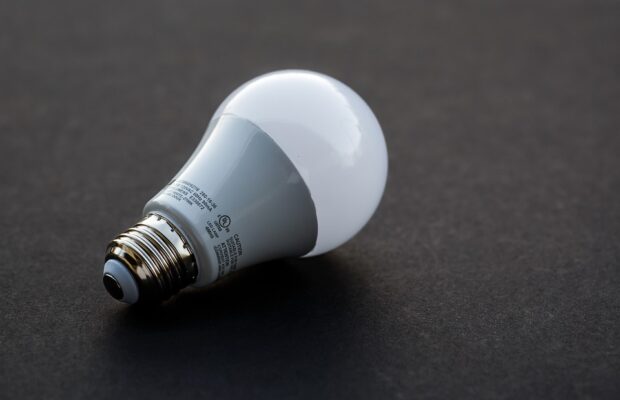Local non-profit makes case that switching to LED bulbs provides many benefits

LEDs have been around since the 1960s but most people have not switched to LED lighting. According to the U.S. Energy Information Administration, only 29 percent of American households have one LED light in their home. LED stands for light-emitting diode, which is far more efficient than the more popular incandescent light bulb. It uses 90 percent less energy than incandescent light bulbs, so 60-watt incandescent light bulbs can be replaced with a 7-watt LED light bulb, reducing the electricity consumption of the average household.
LED bulbs use electricity to produce light. Other bulb technologies, including the filament-based light bulbs we’ve used in our homes since Thomas Edison invented them over 100 years ago, produce intense heat, then produce light as a byproduct of the heat process.
“A normal incandescent lightbulb produces as much heat as a candle,” Glynis Worthington, co-founder of LED Brighter Communities, said. “LED light bulbs reduce energy consumption for lighting typically from 80 to 90 percent. The light spectrum is enhanced as well. This helps older people see things.”
“The key thing with LED is a reduction in electricity usage, which leads to a reduction of fossil fuel usage to generate that electricity,” AP environmental science teacher Jason Lang said.
According to LED Brighter Communities—a nonprofit organization dedicated to providing youth leaders with project-based approaches that can be used to inspire municipal leaders, business owners, and residents to convert their community’s lighting technology to LED—if every household in the United States switched from 60-watt incandescent lightbulbs (the standard and most popular lightbulb), it would reduce the same amount of carbon emissions as taking 800,000 cars off the road or planting 400,000,000 trees(ledbc.org). Natural gas is used to produce about a quarter of all the electricity produced in the world, and with gas prices rising, the electricity price may also rise. LEDs may help lessen the burden of increasing electricity prices.
The LED Brighter Communities site notes, “Twenty percent of the world’s energy usage is from lighting. This could be converted to just 4 percent if the lighting was converted to LED.”
Since the 1960s, LED light bulbs have improved drastically.
“Many people think LED bulbs cost a lot, but prices have fallen dramatically,” Worthington said. “Now they cost nearly the same price as normal light bulbs. Just a couple of dollars to switch your bulbs to LED can save hundreds of dollars on your electric bill, as LEDs reduce energy consumption.”
The prices of LEDs, which were at first up to $20, are now almost the same price as incandescent light bulbs. They have changed the color of the light to make it more similar to the color of the incandescent light, and the longevity has also increased, as it is now about 10 times longer than the standard incandescent light bulb.
“We know over a course of a year you can save hundreds of dollars in your electricity bill,” Lang said, “so there’s both a financial meaning and an environmental reason.”









You must be logged in to post a comment Login